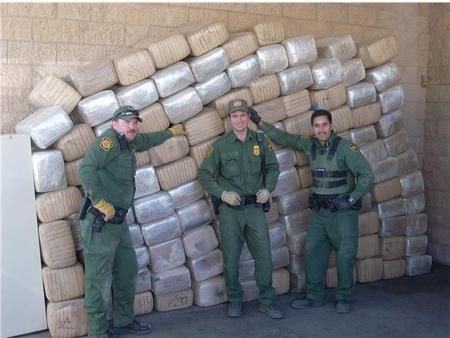In the U.S-Mexico borderlands version of the "war on drugs," the contest between those who try to smuggle illicit substances into the United States and the officials charged with stymieing them has an arms-race-like quality: innovation by one side leads to adaptation by the other. On the U.S. side, it is also very much about public relations as Washington must show that its great efforts are bearing sufficient fruit.
A slide show in last week’s San Diego Union-Tribune would seem to be proof of the great success enjoyed by U.S. authorities. With almost all of the photos coming from U.S. Customs and Border Protection (CBP), they show some of the many innovations adopted by drug smugglers—but ones that ultimately did not fool the “good guys.”
 The images provide substance to the assertion by the Department of Homeland Security (CBP’s “parent”) that drug seizures along the border are up significantly. “From 2009 to mid-2011,” its website boasts, “DHS seized . . . . 31% more drugs . . . along the Southwest border, as compared to [the] previous last two and a half years during the previous Administration.” But like the never-ending stream of trophy images celebrating drug seizures from agencies such as the Border Patrol, these statistics tell us nothing about the relative success or failure of U.S. interdiction efforts. To the contrary, their very existence speaks to the continuing transboundary flow of large amount of illegal drugs.
The images provide substance to the assertion by the Department of Homeland Security (CBP’s “parent”) that drug seizures along the border are up significantly. “From 2009 to mid-2011,” its website boasts, “DHS seized . . . . 31% more drugs . . . along the Southwest border, as compared to [the] previous last two and a half years during the previous Administration.” But like the never-ending stream of trophy images celebrating drug seizures from agencies such as the Border Patrol, these statistics tell us nothing about the relative success or failure of U.S. interdiction efforts. To the contrary, their very existence speaks to the continuing transboundary flow of large amount of illegal drugs.
Over the last 30 years or so, the federal government has spent many hundreds of billions of dollars in its global drug war, with much it going to policing efforts in the U.S.–Mexico borderlands. Given the huge amounts of trans-boundary traffic—84 million vehicular and 44.8 million pedestrian crossings into the United States from Mexico in 2008 alone according to the U.S. Department of Transportation—it is simply impossible to police that traffic to a level that would make a substantial dent in the flow of drugs (which explains why the street price of drugs in the United States has not risen—instead it has steadily declined). As one high-level U.S. Customs official, quoted by political scientist Peter Andreas in his book Border Games, stated in 1995: “If we examined every truck for narcotics arriving into the United States along the Southwest border . . . Customs would back up the truck traffic bumper-to-bumper into Mexico City in just two weeks—15.8 days . . . That’s 1,177 miles of trucks, end to end.”
As one high-level U.S. Customs official, quoted by political scientist Peter Andreas in his book Border Games, stated in 1995: “If we examined every truck for narcotics arriving into the United States along the Southwest border . . . Customs would back up the truck traffic bumper-to-bumper into Mexico City in just two weeks—15.8 days . . . That’s 1,177 miles of trucks, end to end.”
In 2008, a Reuters journalist observed the scene at the San Ysidro (southern San Diego) port of entry—through which reportedly passes one of every eight people who enter the United States by air, sea, or land. “Looking south out of a window at the busiest border crossing in the world,” he wrote “the phrase looking for needles in a haystack comes to mind, along with the realization that America’s war on drugs cannot be won. Unless the laws of supply and demand are miraculously suspended.”
Finding needles in haystacks is a Sisyphean task. For those championing—and profiting from—its undertaking, the beauty of it all is that there can never be enough resources. In this regard, nothing succeeds like failure.


